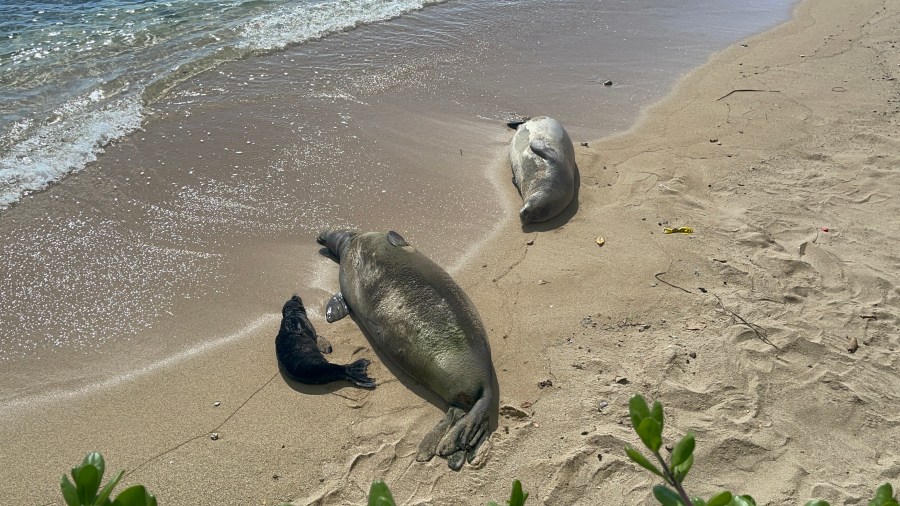HONOLULU (KHON2) — Here in Hawaiʻi, we love our monk seals; and the arrival of a newborn monk seal is always cause for celebration.
Hawaiʻi’s native monk seals are some of the most endangered sea animals in the world. They are protected by state and federal laws because there aren’t many left.
A new seal pup is announced
On Wednesday, May 1, officials in Hawaiʻi announced the birth of another monk seal pup for the fourth year at Kaimana Beach in Waikīkī.
“Federal, state, county agencies and nonprofit organizations have again joined together to keep people and Hawaiian monk seals safe during peak pupping season,” said a spokesperson for DLNR. “For a third time, a seal named Kaiwi has pupped on a popular Waikīkī beach. Their presence always creates a spectacle and potential safety issues for both humans and animals.”
This is Kaiwi’s third pup in as many years.
According to DLNR, an immediate response was orchestrated between staff and volunteers from Hawai‘i Marine Animal Response (HMAR). These groups worked to immediately cordon off the area and put-up caution signs to create a safety corridor around the resting seal pup and her family.
“After so many years of doing this, our folks really understand the process,” HMAR President Jon Gelman said. “Once the pup becomes more active, and begins going into the ocean with its mother, we will constantly be working with our partners, as necessary, to modify our support plan to keep people and animals safely apart.”
DLNR sprung into action with officers beginning around-the-clock overwatch at Kaimana Beach when the family begins going into the ocean, or sooner if it becomes necessary.
“Last year the safety cordon on the beach basically stretched from where the seals were resting to the opposite side of the beach,” explained Chief Jason Redulla, of the DLNR Division of Conservation and Resources Enforcement (DOCARE). “We left an entrance corridor where we can better monitor people coming in and out of the water. When seals are in the water, officers on personal watercraft will warn everyone to exit the ocean. Anyone who does not heed the warnings could be cited for obstructing a government operation.”
NOAA also took this opportunity to weigh in on the arrival.
“We’re so excited for the birth of another pup,” said Kilali Gibson, Oʻahu Marine Wildlife Response Coordinator, NOAA Fisheries. “These seals are some of the most endangered seals in the world, so each new pup is vital to the population. They’ll be together for the nursing period for the next 5-7 weeks and giving them lots of undisturbed space will be key to the pup’s survival. By staying behind the perimeter and choosing to swim at a different beach, you can play a big part in helping to recover this endangered species.”
What you need to know
The first thing you need to know is that you cannot touch this pup. You cannot go near it. No selfies. No videos. No playing or interacting with the seals on the beach or in the ocean. This is a very important time for mother and pup to bond and grow.
The pup is very vulnerable; and since monk seals are endangered, there are extra precautions being taken.
DLNR, NOAA and others are taking steps to ensure that the family are safe and unmolested. However, DLNR has set up a live cam that allows all of us to experience this amazing time in the family’s life.
You can click here to access the DLNR video that gets up close and personal with the monk seal family.
Since the 1950s, monk seal numbers have dropped significantly. It has been cited this is mainly because they might not be finding enough food to eat.
As it stands, there are about 1,570 monk seals across the Hawaiʻi Archipelago. Most of them live in the Northwestern islands, and about 400 live in the main islands of Hawaiʻi.
The state and federal laws that have been created to help protect these seals, along with two state agencies known as the Division of Aquatic Resources and the National Marine Fisheries Service, work together to take care of them.
